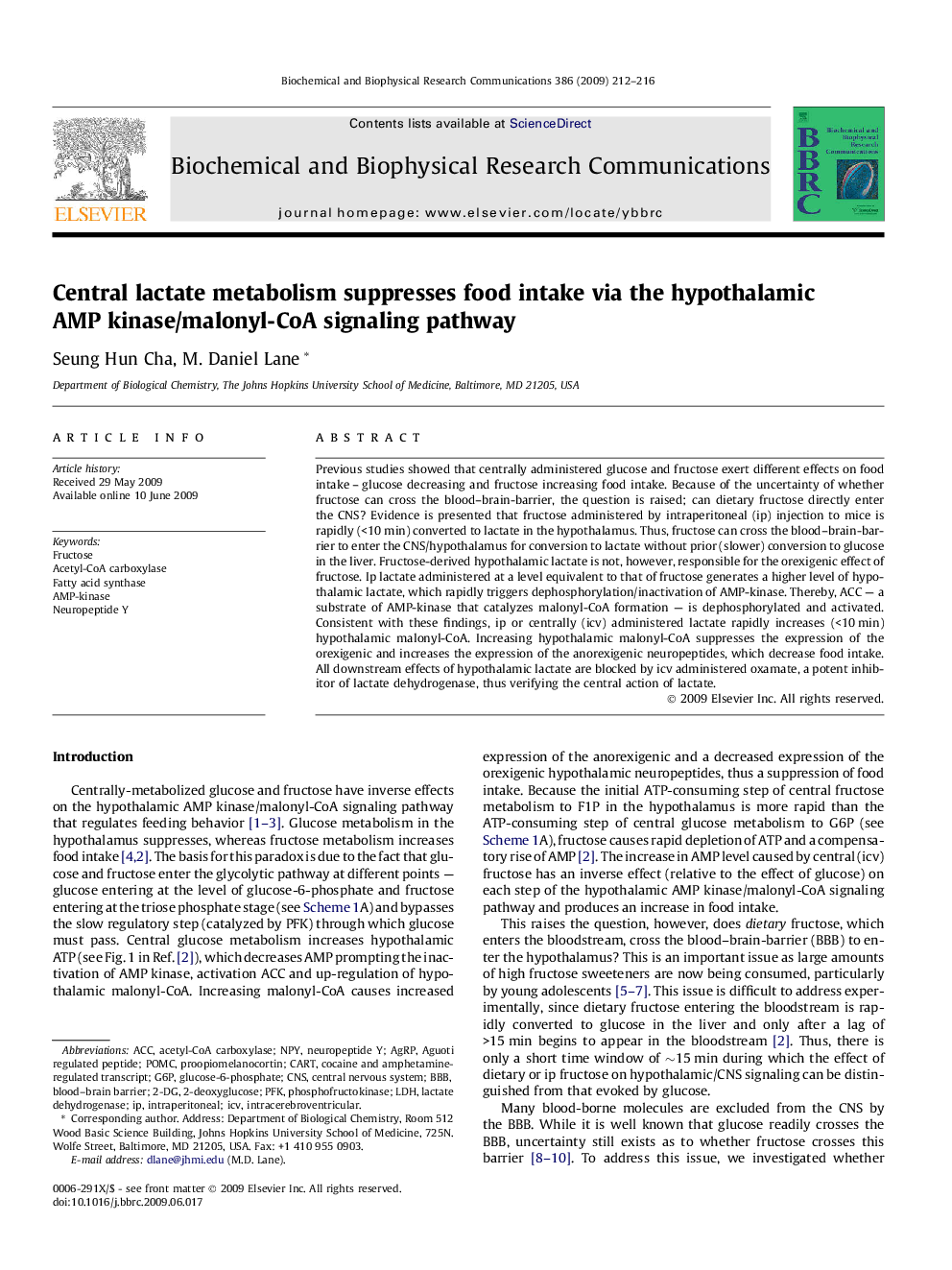| Article ID | Journal | Published Year | Pages | File Type |
|---|---|---|---|---|
| 10765666 | Biochemical and Biophysical Research Communications | 2009 | 5 Pages |
Abstract
Previous studies showed that centrally administered glucose and fructose exert different effects on food intake - glucose decreasing and fructose increasing food intake. Because of the uncertainty of whether fructose can cross the blood-brain-barrier, the question is raised; can dietary fructose directly enter the CNS? Evidence is presented that fructose administered by intraperitoneal (ip) injection to mice is rapidly (<10 min) converted to lactate in the hypothalamus. Thus, fructose can cross the blood-brain-barrier to enter the CNS/hypothalamus for conversion to lactate without prior (slower) conversion to glucose in the liver. Fructose-derived hypothalamic lactate is not, however, responsible for the orexigenic effect of fructose. Ip lactate administered at a level equivalent to that of fructose generates a higher level of hypothalamic lactate, which rapidly triggers dephosphorylation/inactivation of AMP-kinase. Thereby, ACC - a substrate of AMP-kinase that catalyzes malonyl-CoA formation - is dephosphorylated and activated. Consistent with these findings, ip or centrally (icv) administered lactate rapidly increases (<10 min) hypothalamic malonyl-CoA. Increasing hypothalamic malonyl-CoA suppresses the expression of the orexigenic and increases the expression of the anorexigenic neuropeptides, which decrease food intake. All downstream effects of hypothalamic lactate are blocked by icv administered oxamate, a potent inhibitor of lactate dehydrogenase, thus verifying the central action of lactate.
Keywords
PFKG6P2-DeoxyglucoseCARTNPYAgRPPOMCACCICVintracerebroventricular2-DGacetyl-CoA carboxylasefatty acid synthaseintraperitonealCNSBlood–brain barrierBBBcentral nervous systemFructosePhosphofructokinaselactate dehydrogenaseLDHproopiomelanocortinCocaine and amphetamine-regulated transcriptglucose-6-phosphateNeuropeptide Y
Related Topics
Life Sciences
Biochemistry, Genetics and Molecular Biology
Biochemistry
Authors
Seung Hun Cha, M. Daniel Lane,
